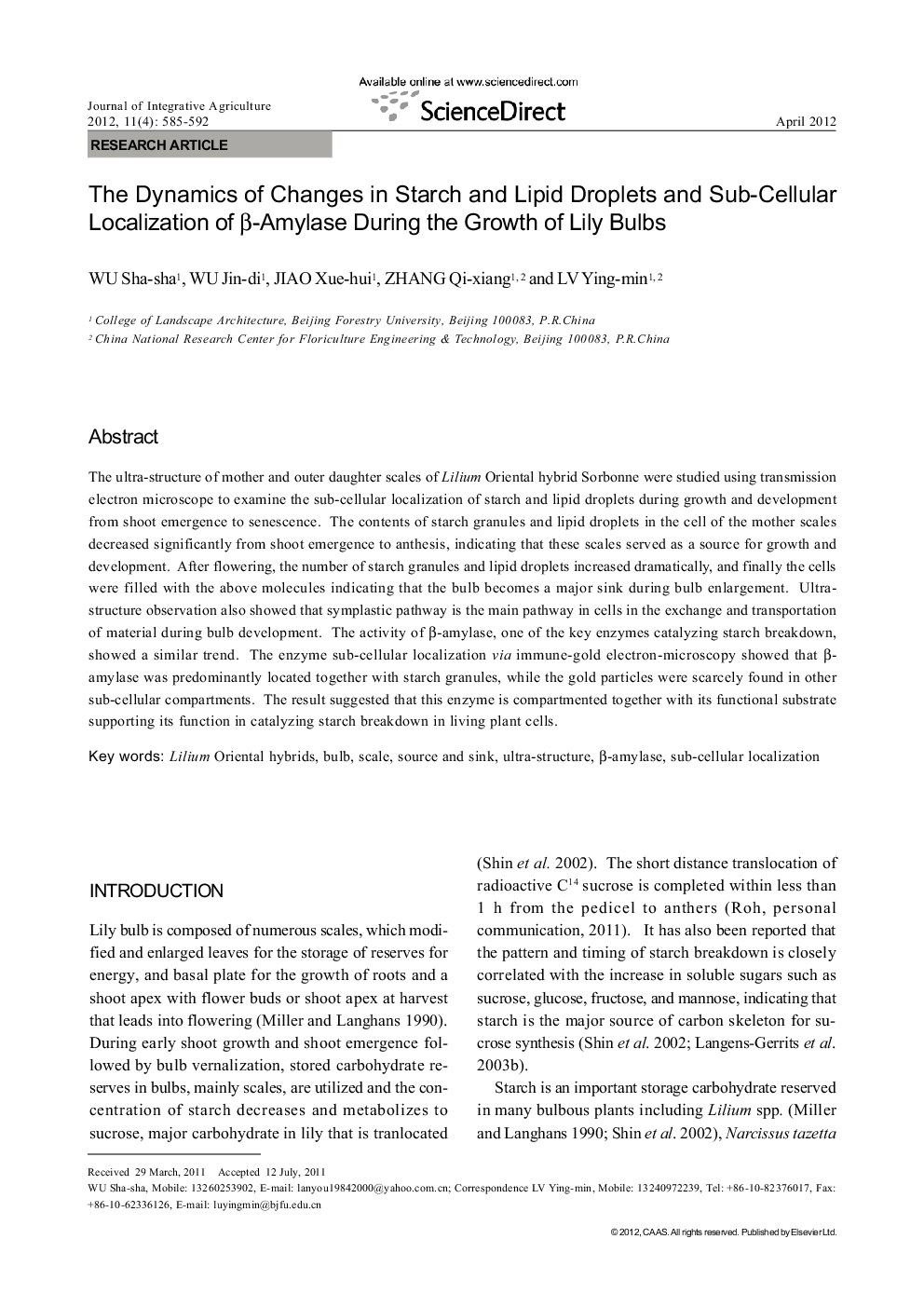| Article ID | Journal | Published Year | Pages | File Type |
|---|---|---|---|---|
| 4495236 | Journal of Integrative Agriculture | 2012 | 8 Pages |
The ultra-structure of mother and outer daughter scales of Lilium Oriental hybrid Sorbonne were studied using transmission electron microscope to examine the sub-cellular localization of starch and lipid droplets during growth and development from shoot emergence to senescence. The contents of starch granules and lipid droplets in the cell of the mother scales decreased significantly from shoot emergence to anthesis, indicating that these scales served as a source for growth and development. After flowering, the number of starch granules and lipid droplets increased dramatically, and finally the cells were filled with the above molecules indicating that the bulb becomes a major sink during bulb enlargement. Ultrastructure observation also showed that symplastic pathway is the main pathway in cells in the exchange and transportation of material during bulb development. The activity of β-amylase, one of the key enzymes catalyzing starch breakdown, showed a similar trend. The enzyme sub-cellular localization via immune-gold electron-microscopy showed that β-amylase was predominantly located together with starch granules, while the gold particles were scarcely found in other sub-cellular compartments. The result suggested that this enzyme is compartmented together with its functional substrate supporting its function in catalyzing starch breakdown in living plant cells.
